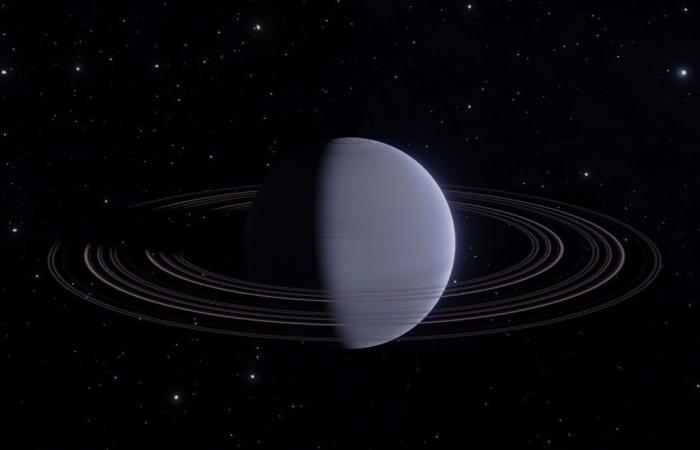par Business AM
published on Tuesday November 12, 2024 has 12:23 •
3 min read
Key information
- An unusual weather event compressed Uranus’ magnetosphere before the Voyager 2 encounter.
- The solar wind likely played a crucial role in this phenomenon by expelling plasma and intensifying dynamics within the magnetosphere.
- This new understanding challenges previous assumptions about Uranus’ moons, suggesting they could be geologically active.
Data collected during NASA’s Voyager 2 flyby of Uranus in 1986 revealed intriguing mysteries about the planet’s magnetic field and its environment. Scientists were baffled by the belts of energized particles around Uranus, which ran counter to expectations based on their understanding of how magnetic fields worked.
The analysis of this data, several decades old, made it possible to find a convincing explanation: an unusual meteorological phenomenon, which occurred shortly before the encounter with Voyager 2, considerably compressed the magnetosphere of Uranus. This compression is responsible for the observed intensification of radiation belts and the apparent absence of plasma, which researchers initially attributed to the inactivity of Uranus’ moons.
The role of the solar wind
The solar wind, a stream of ionized particles coming from the Sun, probably played a crucial role in this phenomenon. By bombarding Uranus’ magnetosphere, the solar wind expelled plasma from the system while intensifying dynamics within the magnetosphere itself. This increased activity fed electrons into the radiation belts, creating the intense belts observed by Voyager 2.
This new understanding challenges previous assumptions about Uranus’ moons. The researchers suggest that these moons could be geologically active, producing ions that contributed to the magnetosphere despite initially appearing inert.
Implications for future missions
Future missions to Uranus are eagerly awaited by the scientific community. These missions will aim to better understand the complexities of this unique planet and its system, building on valuable information gleaned from Voyager 2’s historic flyby.
If you want access to all articles, subscribe here!







